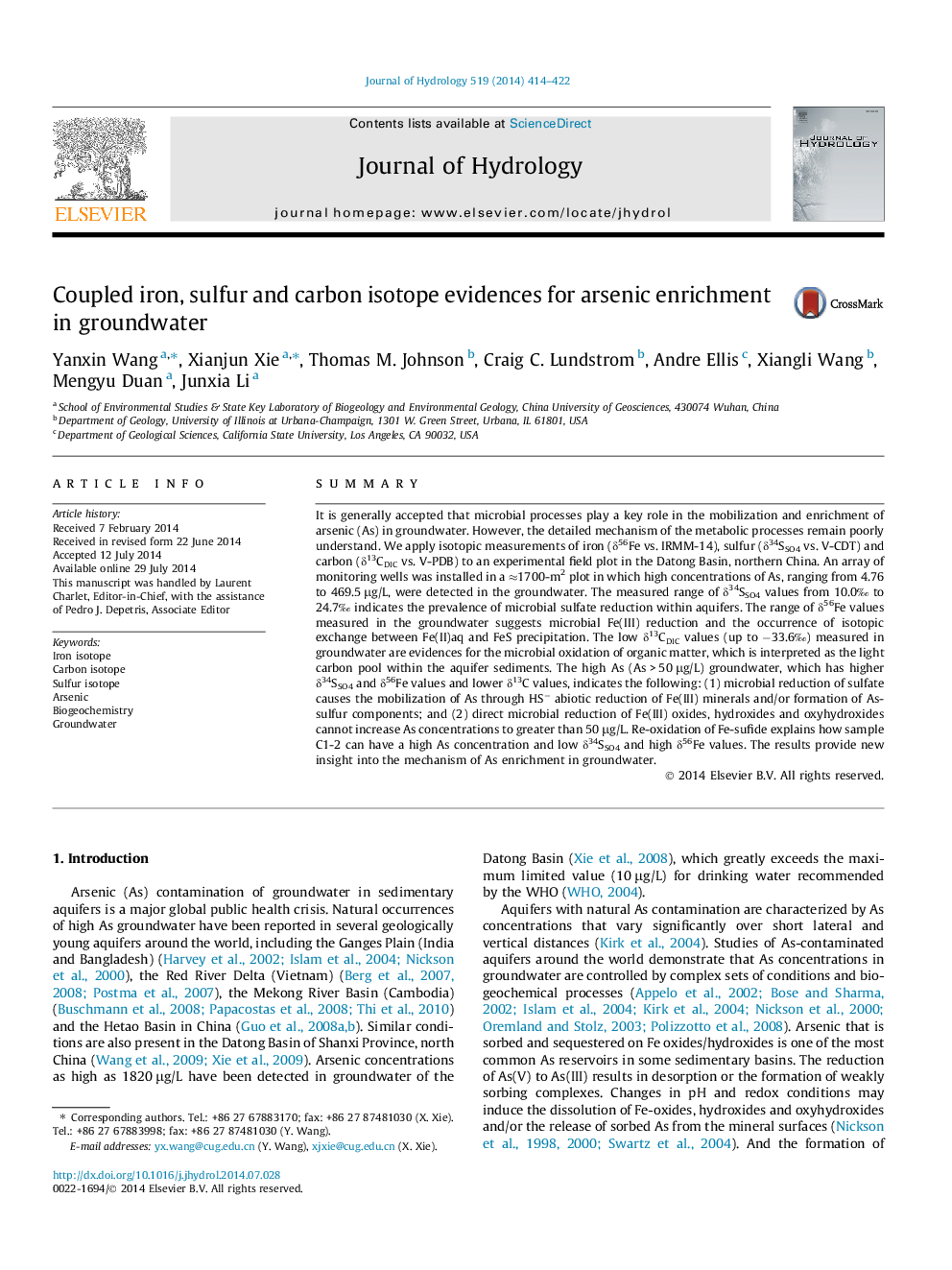| کد مقاله | کد نشریه | سال انتشار | مقاله انگلیسی | نسخه تمام متن |
|---|---|---|---|---|
| 6412400 | 1332898 | 2014 | 9 صفحه PDF | دانلود رایگان |
- Fe, S and C isotopes were applied to demonstrate the mobilization of As in groundwater.
- Simultaneous reduction of Fe(III) and SO42â observed in the high As aquifers.
- HSâ directly reduction of As-bearing Fe(III) minerals controls As concentration greater than 50 μg/L.
SummaryIt is generally accepted that microbial processes play a key role in the mobilization and enrichment of arsenic (As) in groundwater. However, the detailed mechanism of the metabolic processes remain poorly understand. We apply isotopic measurements of iron (δ56Fe vs. IRMM-14), sulfur (δ34SSO4 vs. V-CDT) and carbon (δ13CDIC vs. V-PDB) to an experimental field plot in the Datong Basin, northern China. An array of monitoring wells was installed in a â1700-m2 plot in which high concentrations of As, ranging from 4.76 to 469.5 μg/L, were detected in the groundwater. The measured range of δ34SSO4 values from 10.0â° to 24.7â° indicates the prevalence of microbial sulfate reduction within aquifers. The range of δ56Fe values measured in the groundwater suggests microbial Fe(III) reduction and the occurrence of isotopic exchange between Fe(II)aq and FeS precipitation. The low δ13CDIC values (up to â33.6â°) measured in groundwater are evidences for the microbial oxidation of organic matter, which is interpreted as the light carbon pool within the aquifer sediments. The high As (As > 50 μg/L) groundwater, which has higher δ34SSO4 and δ56Fe values and lower δ13C values, indicates the following: (1) microbial reduction of sulfate causes the mobilization of As through HSâ abiotic reduction of Fe(III) minerals and/or formation of As-sulfur components; and (2) direct microbial reduction of Fe(III) oxides, hydroxides and oxyhydroxides cannot increase As concentrations to greater than 50 μg/L. Re-oxidation of Fe-sufide explains how sample C1-2 can have a high As concentration and low δ34SSO4 and high δ56Fe values. The results provide new insight into the mechanism of As enrichment in groundwater.
Journal: Journal of Hydrology - Volume 519, Part A, 27 November 2014, Pages 414-422
